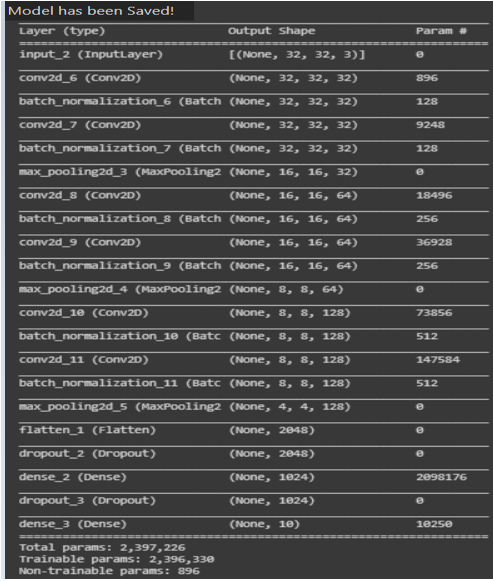Updated March 10, 2023

Introduction to TensorFlow Load Model
TensorFlow Load Model is the functionality available in TensorFlow wherein we can save the model that we have created during and after the training of the model and load the same when required in the same status when we saved it. In this article, we will have a look at what is TensorFlow load model is, how we can use it, its files, and methods that can help us to use the load mechanism in TensorFlow.
What is Tensorflow Load Model?
Tensorflow load model is the functionality wherein we can save the model and load the same when required by some other or same person that will be at the same status when it was when saved. Load model functionality makes the tasks of long training times to be split in small time slots according to our necessity as the model still remains the things, we trained them the last time it was saved. Along with that this functionality can help us to share the basic model with other developers which can try to create the model by using the code they have shared and also while trained parameters or weights for that model. The other developers can use the model created by simply loading it and can work with different dataset and also gives the understanding of how a model works.
We can save the TensorFlow model using multiple ways and you can go for any one of them depending on which API you are using. Tf.keras is the name of the API which is most commonly used for saving, training and loading the tensorflow model.
How to use tensorflow load model?
You can use the tensorflow model by installing it simply by using the below commands –
Pip install pyyaml h5py
While executing the above command it is compulsory to save the file in HDF5 format.
In order to check the version of the TensorFlow that you have installed in your system, you can go for typing in the program after importing the tensorflow and Keras libraries in your program. Thereafter, by using the print statement, you can then go for printing the version property of the TensorFlow by using the name with which you imported it. Your program can be as shown below –
Import tensorflow as EducbaTF from tensorflow
Import keras
Import os
print (EducbaTF.version.Version)
The output of the above program will be as shown below that will print the version of the installed tensorflow –
Thereafter, you can make use of TensorFlow for doing multiple tasks that are listed as shown below –
• Collect the data set.
• Model Definition.
• When performing the training of the model make sure to save the checkpoints.
• You can save the checkpoints and perform the callback options where you can provide unique names to all the checkpoints once per five epochs.
• We can save the weights manually by using the Model.save_weights method.
• The complete model can be saved after the above steps using model.save.
• We can saveModel to make the models serializable using EducbaTF.keras.models.load_model.
• The provision of saving the models in keras can be done by using the default standard of HDF5.
Tensorflow model has two main files
When performing the checkpointing in TensorFlow, we require two main files for this which are the index file and the data file that is used for manipulating the metadata. The first file that is the index file is responsible for keeping a track of all the savings of the checkpoints and the corresponding numbering to those checkpoints. The data file contains the values of the variables of checkpoints and the paths that are looked up for attribute values. The above ones are important for checkpoints in TensorFlow.
Along with the above two files, there are another two files that are important when thought of Tensorflow in broader view which is meta graph and the checkpoint file. The Meta graph file contains the details of the savings made by protocol buffer that helps in taking the saving copy of the complete graph of tensorflow which includes its operations, variables, and collections. Along with that, there are many other attributes being stored in this file. This file has the extension of .meta.
The checkpoint file contains the binary data of the values of other properties and variables such as biases, weights, gradients, and many other such variables. The extension of this file is .ckpt and this was until version 0.11. After that, the files of the checkpoints namely data and index file were introduced which were explained above.
TensorFlow load model method
We can save and load the models of tensorflow by using the following methods which are inbuilt functions available in tensorflow –
- modelName.save()
- modelNAme.save_weights()
- Using the simple save() method and passing the arguments of file path to it which will lead to saving of model weights, architecture, and the optimizer state so that we can pick up from where we left the model creation.
- The loading of the model can be done by using load_method() which can be called by using the name of the model which we want to load.
Note: While saving the model, if you do not mention the format then the default extension will be taken from tensorflow native format. If we specify the extension as .h5 then the model will be saved in hdf5 format. Let us take the example where we will have to load the model named EducbaSample in python language. Our program will look as shown below –
// Import statements at the top to import the required libraries
// Creation of model by using Model method
sampleModel = Model(index, xParameter)
sampleModel.save(“EducbaSample.h5”)
print(“Model has been saved!”)
// Loading the model using load_model() method
retrieveSavedModel = load_model(“EducbaSample.h5”)
retrieveSavedModel.summary();
The output of the above code of python for loading the model gives the following summary of it –
Conclusion
The TensorFlow load model is used to get the saved model in the status where we left it while saving the model. We can make the use of load_model() method for doing this. The main usage of this is to share to other users the model so that they can understand the way in which the modal is created and try to supply different data set to test the model or complete the remaining training of the model.
Recommended Articles
This is a guide to TensorFlow Load Model. Here we discuss the Introduction, What is the tensorflow load model, How to use the tensorflow load model? examples with code implementation. You may also have a look at the following articles to learn more –

